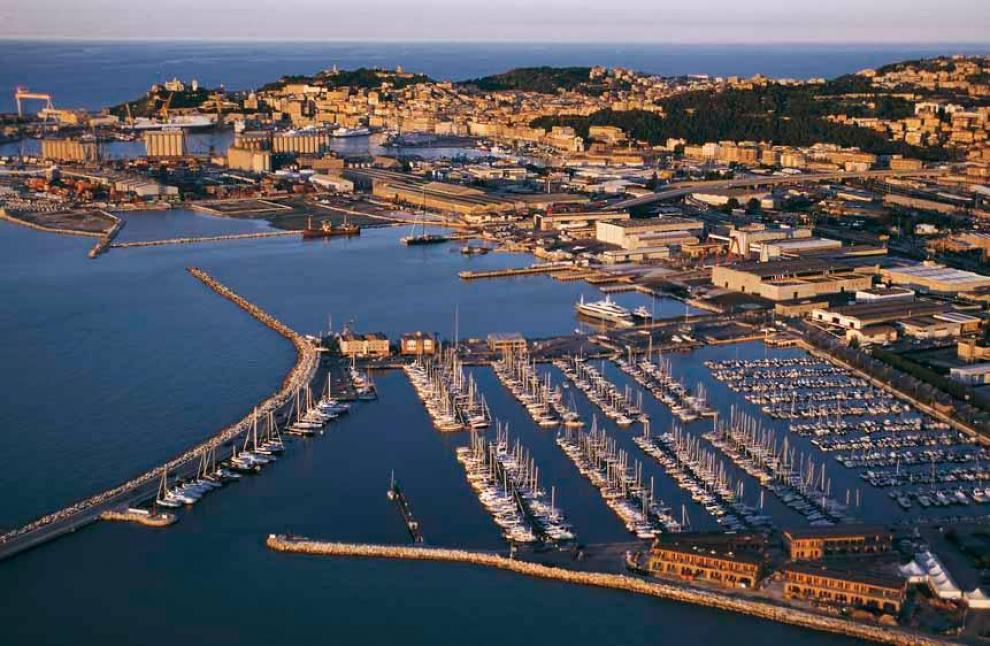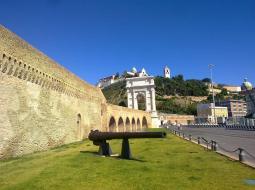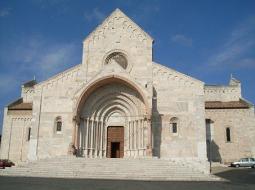Thessaloniki gets ready for its metro launch in November
The underground rapid transit lines have been under construction for almost two decades due to various project delays
 TheMayor.EU logo
TheMayor.EU logo 
Ancona was founded by Syracusan colonists around 390 BC. It was taken by Rome in the 2nd century BC and became a flourishing port, particularly favoured by the Roman emperor Trajan, who enlarged the harbour. Constantly raided and under assault by Goths, Lombards, and Saracens, Ancona declined but recovered its importance in the Middle Ages. Ancona was one of the 5 cities of the Maritime Pentapolis under the Byzantine exarchate of Ravenna. The seat of a Carolingian march (frontier borderland), became a semi-independent republic under papal control. In 1532 direct papal rule was established and, with the exception of a period of French domination, was maintained until Ancona became part of Italy in 1860. The city was bombarded by the Austrian fleet during World War I and suffered severe damage from Allied bombings during World War II.
Notable landmarks, restored since the war, include the marble Arch of Trajan; the 11th- to 12th-century Church of Santa Maria della Piazza and the 12th- to 13th-century Cathedral of San Ciriaco. Originally, the harbour was protected only by the elbow-shaped promontory from which the Italian city takes its name (angkon in Greek means elbow), but now has modern installations built since World War II, including a petroleum refinery.
Source: Encyclopedia Britannica
Ancona is a city and a seaport in the Marche region in central Italy, with a population of around 102,000 (2015). It is the capital of the province of Ancona and of the region. The city is located 280 km northeast of Rome, on the Adriatic Sea, between the slopes of the two extremities of the promontory of Monte Conero, Monte Astagno and Monte Guasco.
Ancona is the main economic and demographic centre of the region. The harbour of Ancona is the central point to the economic activity of the city. It is one of the most important ports in the Adriatic for passengers, freight and fishing.

The Arch of Trajan, 18 metres high, was erected in 114-115 as an entrance to the causeway atop the harbour wall of Ancona in honour of the emperor who had made the harbour. The Arch is one of the finest Roman monuments in the Marches. Most of its original bronze enrichments have disappeared. It stands on a high podium approached by a wide flight of steps. The archway, only 3 metres wide, is flanked by pairs of fluted Corinthian columns on pedestals.

Dedicated to Judas Cyriacus, the Cathedral was completed in 1189. It is a fine Romanesque building in grey stone, built in the form of a Greek cross, and other elements of Byzantine art. It has a dodecagonal dome over the centre, slightly altered by Margaritone d'Arezzo in 1270. The façade of the building has a Gothic portal, ascribed to Giorgio da Como in 1228, which was intended to have a lateral arch on each side.
The interior of the Cathedral, which has a crypt under each transept, preserves its original character. It has 10 columns which are attributed to the temple of Venus. The Cathedral of San Ciriaco was restored in the 1980s.
Address: Largo XXIV Maggio №1, 60123